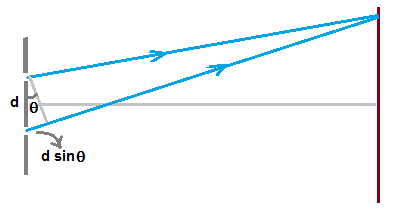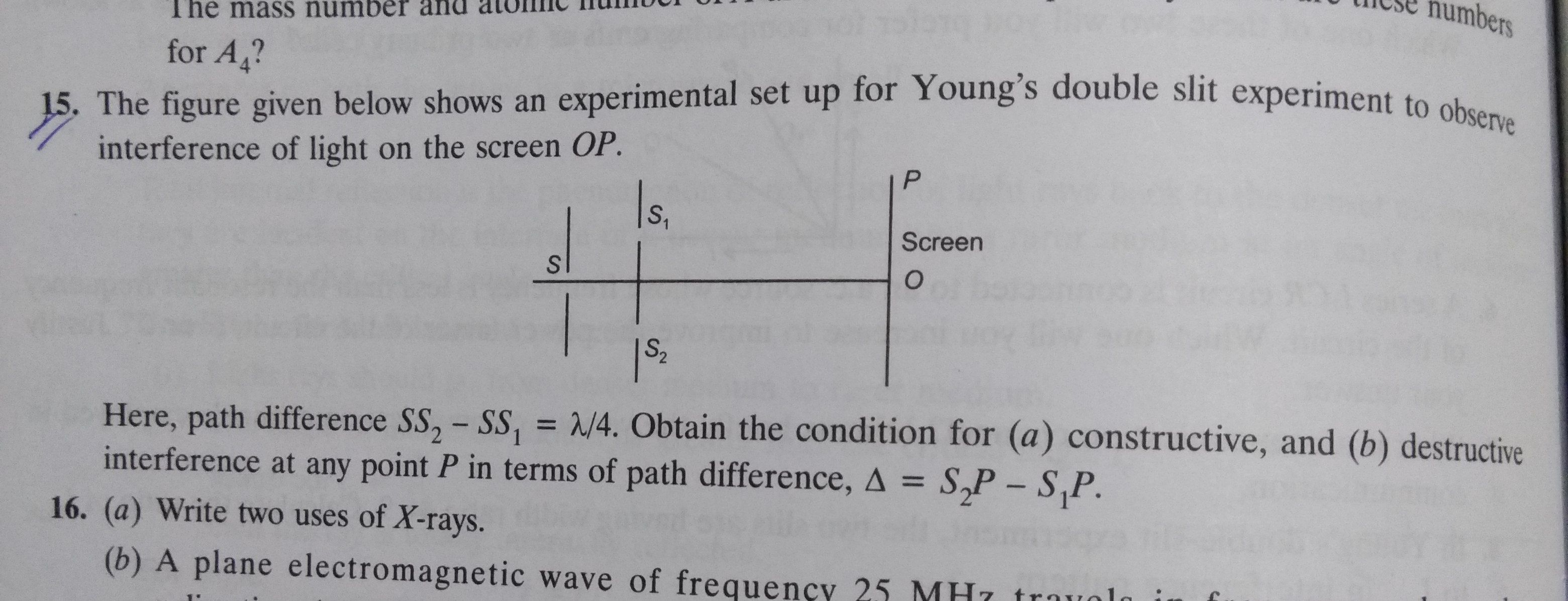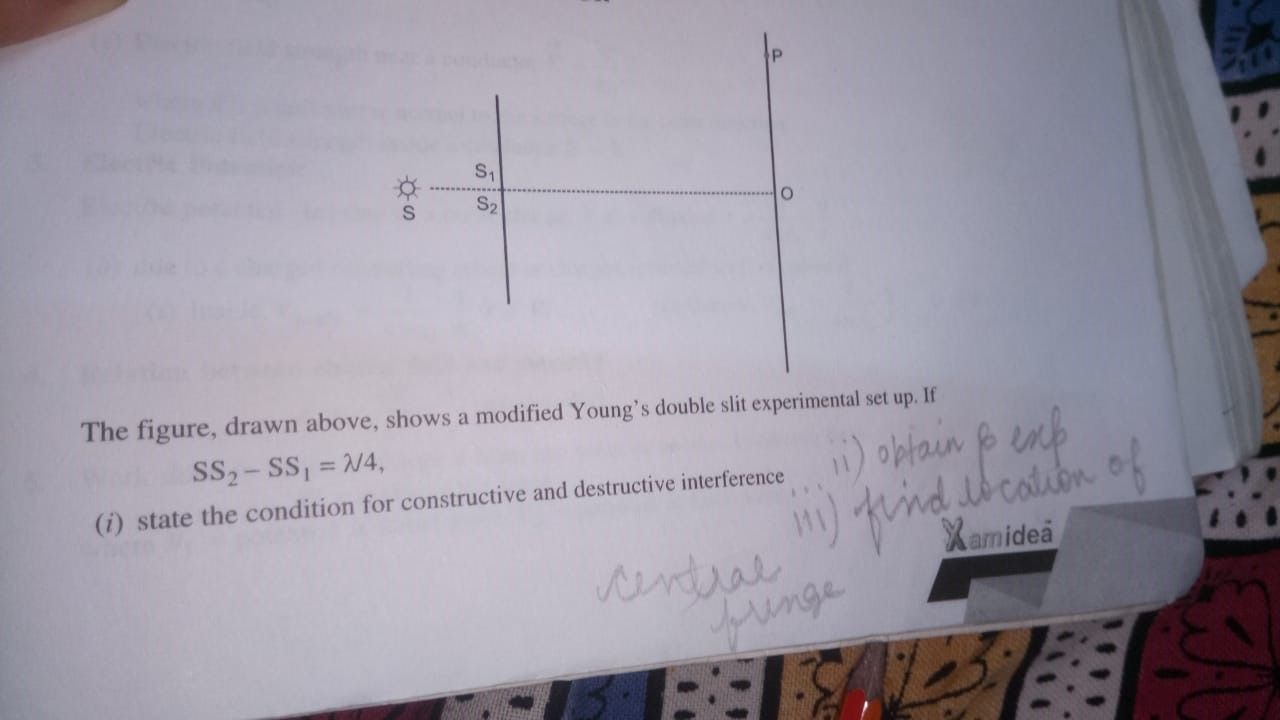CBSE Class 12-science Answered
if separation between the two slits is increased till fringes are observed then what will happen to angular separation of fringes
(my thought is here fringes are not observed and they are increasing till fringes show up ...so until then what will happen to angular width if we increase d-slit separation..does angular width increases or remains same
Asked by neetaspirantdoctor | 20 May, 2022, 15:57: PM

we know , we observe interference pattern if the following condition is satisfied
d sinθ = n λ
where d is distance between slits, θ is angular position of bright fringe , n is integer and λ is wavelength.
Angular position is obtained from above expression as
sinθ ≈ θ = ( n λ ) / d
We see that from above expression , angular position θ decreases as d increases for same n-th fringe
Answered by Thiyagarajan K | 21 May, 2022, 08:24: AM
Concept Videos
CBSE 12-science - Physics
Asked by talulu | 01 May, 2024, 17:14: PM
CBSE 12-science - Physics
Asked by shivamtkr7767 | 03 Mar, 2024, 12:45: PM
CBSE 12-science - Physics
Asked by tannusharan31 | 05 Nov, 2023, 17:31: PM
CBSE 12-science - Physics
Asked by mrwballari999 | 03 Jan, 2023, 09:33: AM
CBSE 12-science - Physics
Asked by neetaspirantdoctor | 20 May, 2022, 15:57: PM
CBSE 12-science - Physics
Asked by aryanshahi903 | 09 Apr, 2021, 06:14: AM
CBSE 12-science - Physics
Asked by nehadevi2728 | 19 Mar, 2021, 15:56: PM
CBSE 12-science - Physics
Asked by deepsmooth41 | 19 Apr, 2020, 01:00: AM
CBSE 12-science - Physics
Asked by ritikabehera01 | 20 Feb, 2019, 09:56: AM
CBSE 12-science - Physics
Asked by jain.pradeep | 18 Feb, 2019, 23:27: PM




 but where does the formula
but where does the formula  come from??
come from??

